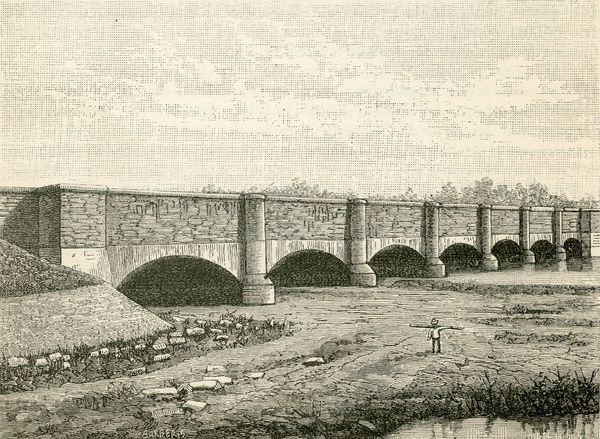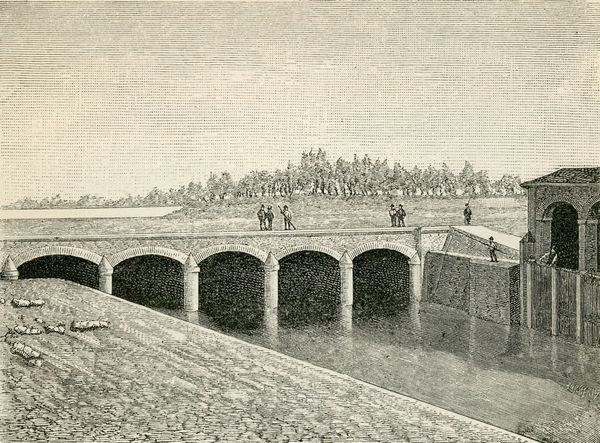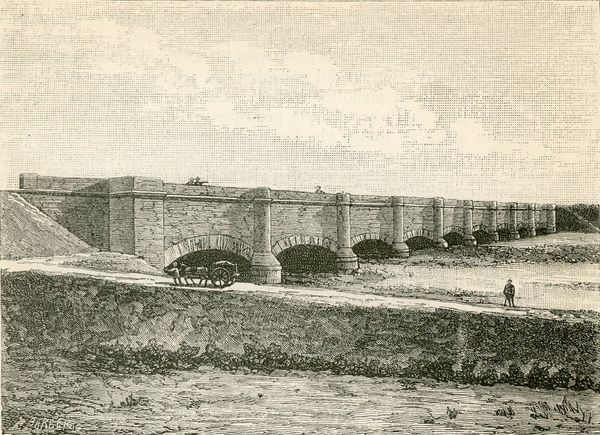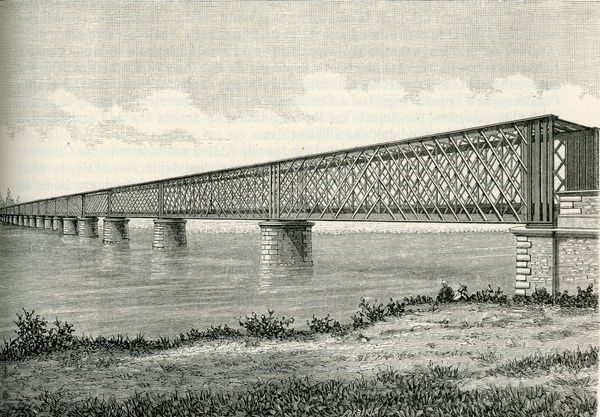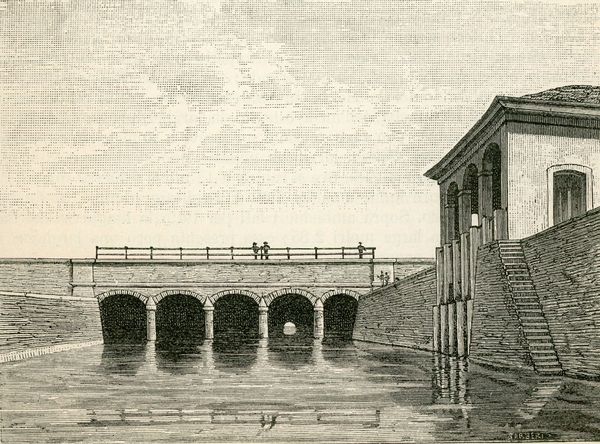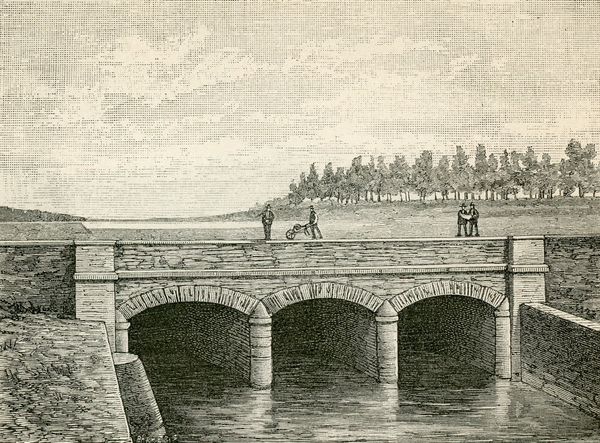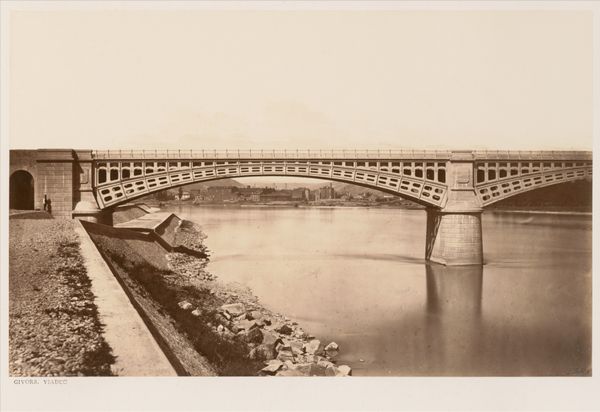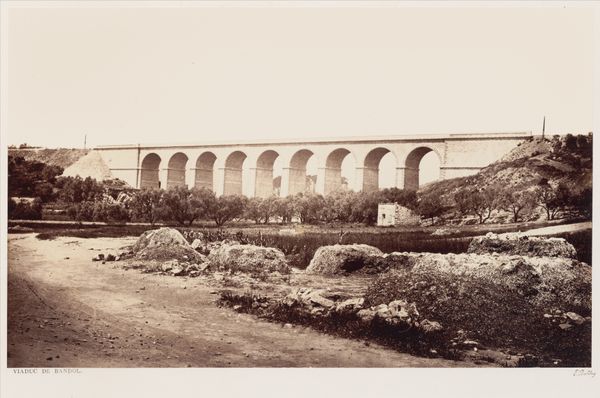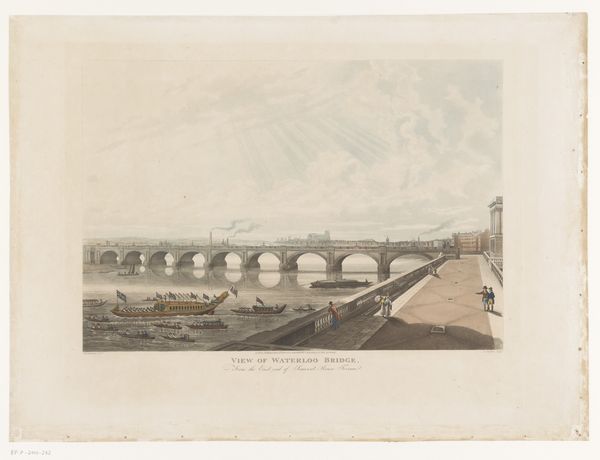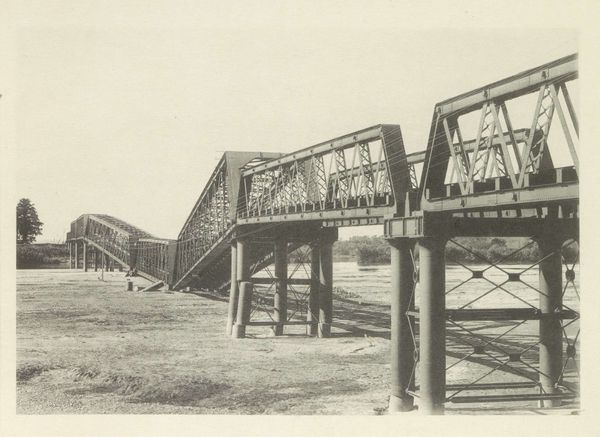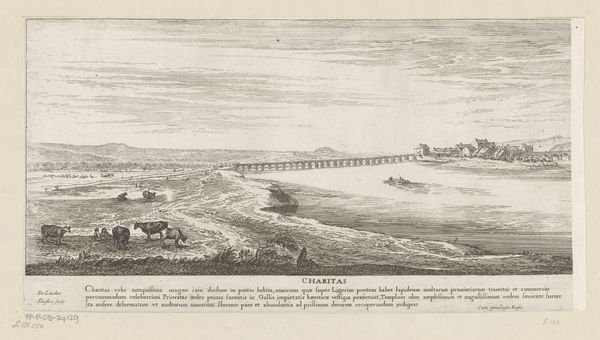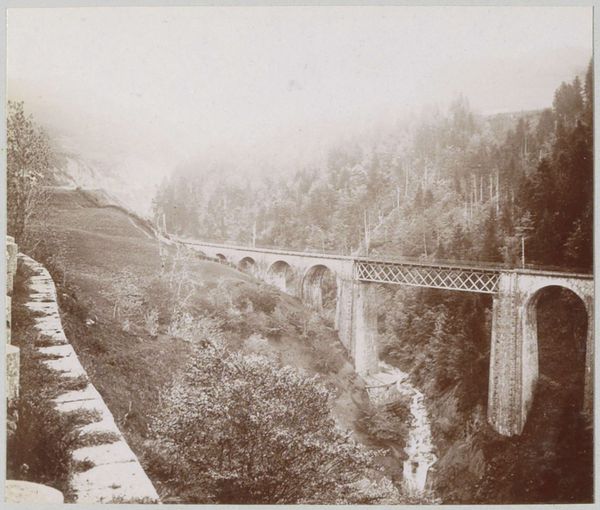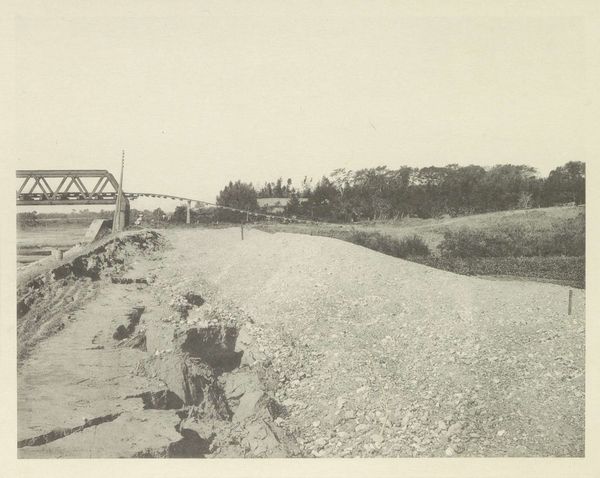
drawing, print, engraving
#
drawing
#
16_19th-century
# print
#
landscape
#
architectural drawing
#
cityscape
#
engraving
#
realism
Copyright: Public domain
Editor: Giuseppe Barberis's "Ponte Sul Ticino", created in 1894, strikes me as an ode to infrastructure. It's incredibly detailed for an engraving, capturing the bridge's form and the landscape. But how do you interpret this image within its historical moment? Curator: It's crucial to consider the bridge not just as infrastructure but as a symbol of progress and connection. The late 19th century in Europe was a time of massive industrial and technological advancement, coupled with profound social upheaval. The bridge would have been viewed as a democratizing element connecting communities and fostering economic growth. What social classes are depicted using this "democratizing" piece of architecture, and what is their purpose? Editor: I see figures of different status, including the people traveling, suggesting its accessibility. Yet the landscape and drawing style feels traditional. Curator: Precisely. This tension highlights a crucial point: technological progress did not erase class distinctions, labor exploitation or the effects of colonialism. Look at the environmental impact in the lower-right foreground, and ask whether that kind of construction comes without impact. Do the figures along the bank appear equal to those riding in the carriage? The bridge also represents control and modification of nature for human use, echoing broader colonial narratives of domination. Editor: I see. So the bridge, while physically connecting places, can also be interpreted as a reflection of existing social and power structures? Curator: Absolutely. The engraving freezes a specific moment in time that encourages us to question progress, power, and representation within that historical framework. By recognizing these narratives, we can critically examine our own assumptions about development and modernity. Editor: I now understand how an image of infrastructure can also carry loaded meaning from a specific time! Thanks for the historical background, it offers great perspective on Barberis's work. Curator: My pleasure. These visual records prompt questions and inspire more profound analyses.
Comments
No comments
Be the first to comment and join the conversation on the ultimate creative platform.
